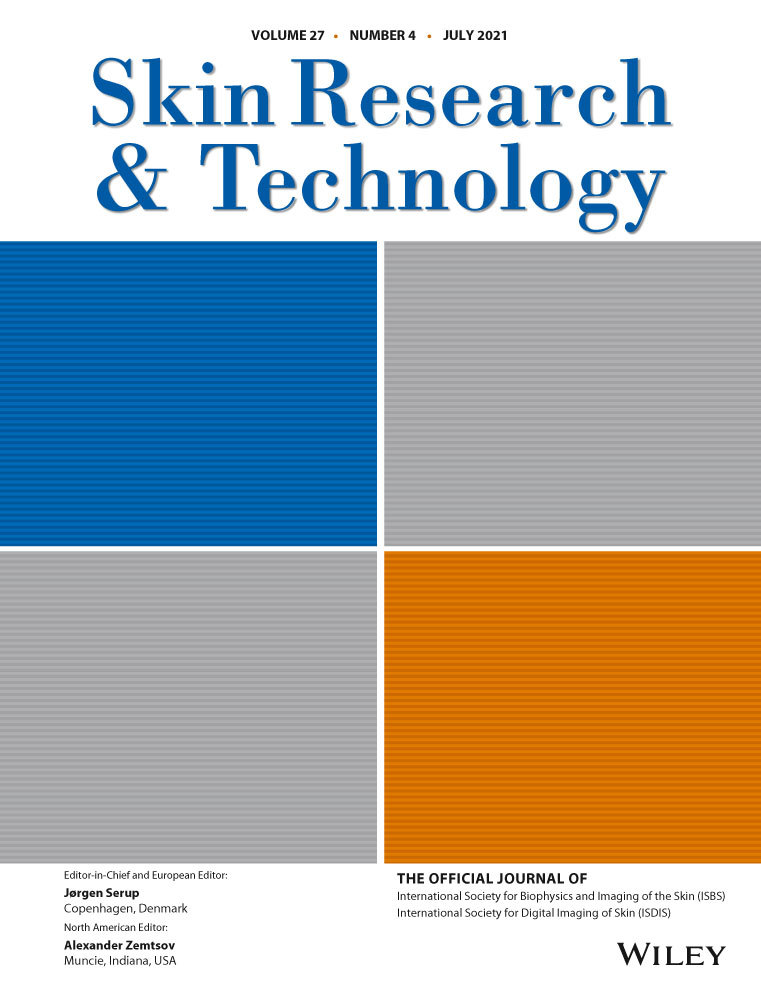Examination of age-related changes of viscoelasticity in the dermis and subcutaneous fat layer using ultrasound elastography
Abstract
Background
Using ultrasound elastography, the present study aimed to measure the viscoelasticity in each skin layer and to determine the relationship between the measured value, age, and body mass index (BMI).
Materials and Methods
The present study included 77 Japanese women. We calculated the BMI and measured the facial cheek via elastography. With the use of the elastographic image, the dermis was divided into two layers, and the subcutaneous fat layer was divided into five equal sections according to the depth, ultimately obtaining seven layers. Furthermore, the thickness and viscoelasticity of each divided layer were measured.
Results
The analysis of echo images revealed that the thickness of the upper dermis layer decreased with age, whereas that of the subcutaneous fat layer tended to increase with age and BMI. As measured by elastography, the viscoelasticity of both the lower dermis and the upper subcutaneous fat layer decreased with age. As the BMI increased, the viscoelasticity of the lower subcutaneous layer also increased, but that of the upper subcutaneous layer decreased.
Conclusions
The present study revealed the relationship between aging and viscoelasticity in the lower dermis and the relationship between aging, BMI, and viscoelasticity in the upper subcutaneous fat layer.




